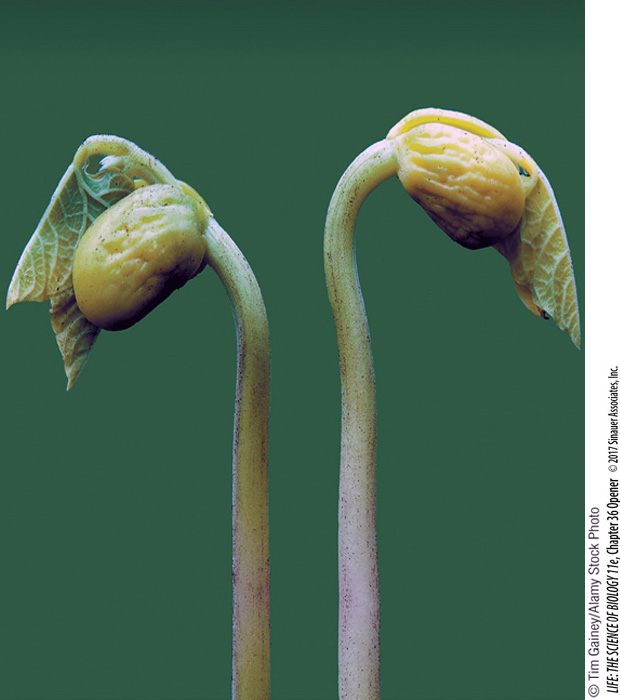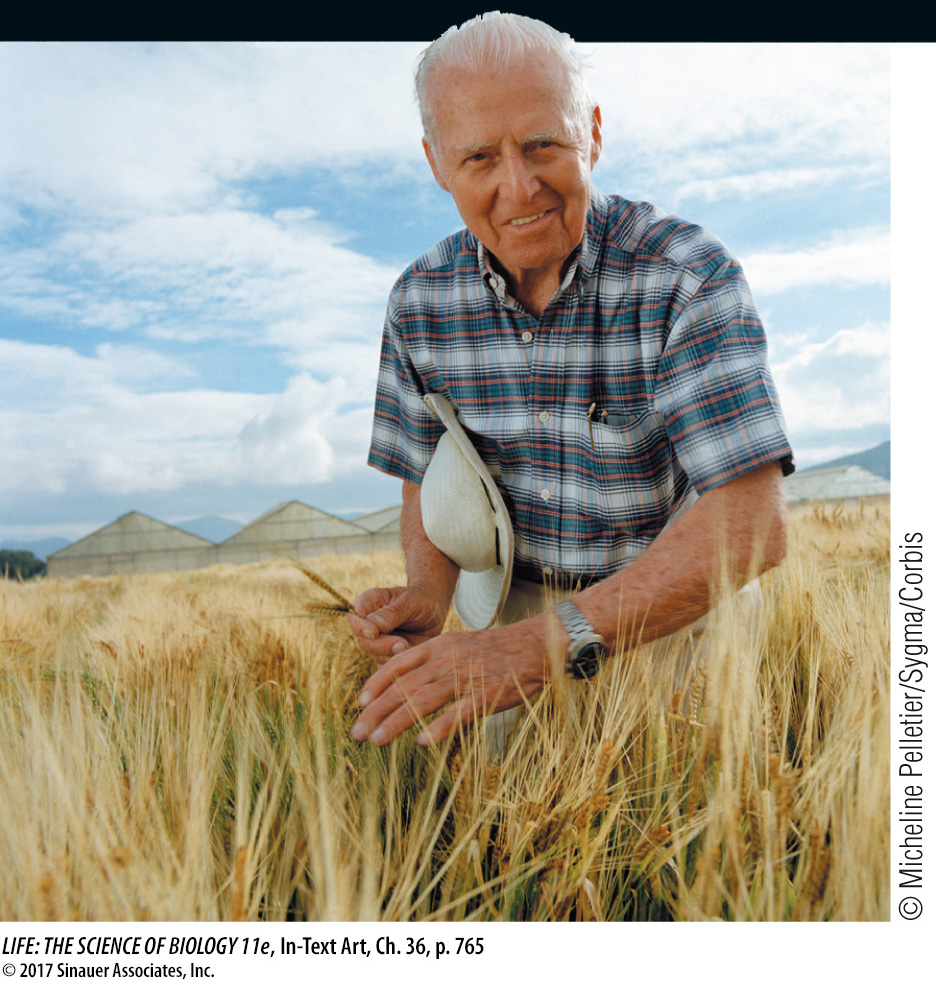Chapter Introduction
Regulation
of Plant Growth

investigating life
A Nobel Prize for a Plant Biologist
In their constant search for ways to help farmers produce more food for a growing population, biologists have developed cereal crops whose physiology allows them to produce more grain per plant (resulting in higher yields). The drawback of this approach is that the sheer weight of the load of seeds may cause the stem to bend over. The problem is made worse when fertilizer added to the soil stimulates plants to grow taller. Harvesting seeds on the ground is very difficult; think of how hard it would be to pick up seeds one by one, when some have already sprouted.

In 1945 the U.S. Army temporarily occupied Japan, which was defeated in World War II. During the war, Japan, an island nation with a limited amount of land suitable for farming, was blockaded and could not import food or other supplies. Food was rationed and many people were hungry, but there were no major famines in Japan during that period. How were the Japanese able to produce enough grain to feed their population? The answer to this question lay in the fields: the Japanese had bred genetic strains of rice and wheat with short, strong stems, growing in thickness rather than height, that could bear high yields of grain without bending over. An agricultural advisor to the occupying American army sent samples of the grains to the United States.
A decade later, the American plant geneticist Norman Borlaug, who was working in Mexico at the time, began making genetic crosses between the Japanese wheat and other varieties that had genes conferring rapid growth, adaptability to varying climates, and resistance to fungal diseases. The results were “semi-
How is plant growth controlled, and what changes in growth patterns made the new strains of wheat and rice successful?